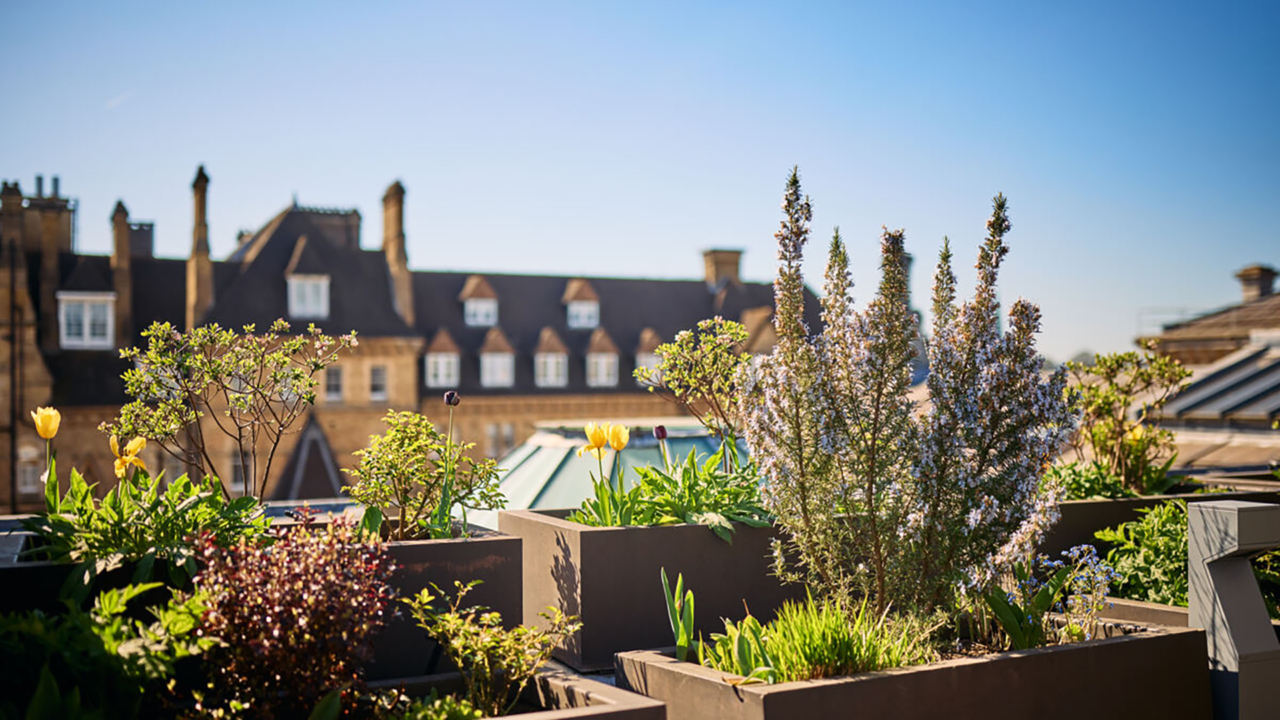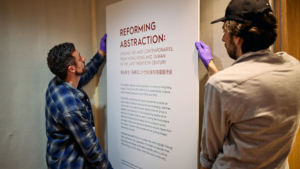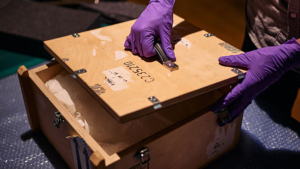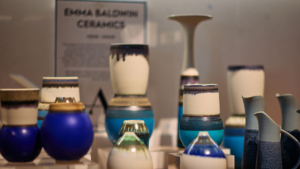- Posted on May 13th, 2025
Oxford University’s Gardens, Libraries and Museums – Charting a Course to Net Zero

For Arts Council England and Julie’s Bicycle’s annual report 2023-24, we feature over 50 practical examples of cultural organisations taking climate action including in depth case studies like this one. Check out the full interactive report here.
This case study was written by Oxford University’s Gardens, Libraries and Museums (GLAM) – a collective comprising of four museums (the Ashmolean Museum, History of Science Museum, Museum of Natural History, and Pitt Rivers Museum), the Bodleian Libraries (28 libraries including the historic Old Library), and the Oxford Botanic Garden and Arboretum. GLAM is committed to achieving carbon net zero by 2035. They outline their focus on measuring their carbon footprint across all emission scopes, piloting decarbonisation plans, and setting science-led targets to achieve their ambitious goals.
GLAM’s Journey
Across GLAM we have been working to measure our carbon footprint, set science-led targets and build our transition plans to be carbon net zero by 2035. In 2023/24 we completed an initial pilot to build a decarbonisation plan for the Ashmolean Museum. This pilot involved calculating the carbon baseline, setting achievable carbon reduction targets and agreeing an implementation plan. Following the successful pilot, we are now rolling out with the other GLAM units. In 2023/24, we completed calculating our carbon baseline across the GLAM departments for all emissions across Scopes 1,2 and 3. Scope 1 covers direct emissions from our own resources, such as gas heating. Scope 2 covers indirect emissions from purchasing electricity. Scope 3 covers indirect emissions from our operations such as staff travel, purchased goods and services and commercial operations.
Our next stage is to set science-led targets aligning with the University of Oxford’s net zero carbon target of 2035. Following that we will be creating a transition plan to help us achieve our goals with interim targets in 2026 and 2030.

Importance of measuring data
The museum sector is alive to, and a participant in, the climate crisis. For the Gardens, Libraries and Museums this is important because:
- GLAM institutions have a civic duty and a strong educational role to play as trusted organisations to engage with environmental sustainability, both supporting action and leading by example in the effort to reach net zero carbon.
- Our audiences expect us to be acting. The Act Green 2023 report explores the role of cultural organisations and their audiences in tackling the climate crisis.
Some headlines:- 77% of cultural audiences think cultural organisations have a responsibility to influence society to make radical change.
- Audiences and visitors think organisations are not doing enough or feel that they are not communicating what they are doing effectively.
- 93% of cultural audiences expect organisations to ensure their buildings are as energy-efficient as possible.
- 3 in 4 audiences want information from organisations about how they can act more sustainably.
- Audiences and visitors want to play their part in helping organisations fulfil their sustainability goals.
- The wider University has set ambitious targets and requires significant action if we are to achieve our goals.
- Funders expect us to be acting. GLAM’s museums comprise a National Portfolio Organisation (Oxford University Museums Partnership) and in line with Arts Council England’s Investment Principles, we have set ambitious annual and three-year action plans for Environmental Responsibility.
- Climate change introduces risk and opportunity into our organisations. Understanding more around our carbon footprint helps us to reduce potential future risks and identify ideas for development.
- Our colleagues are keen to participate and act. Having robust environmental plans will help us attract and retain a high-quality workforce.
Measuring our carbon footprint is the key first step as it tells us where to target activity that will make the most impact.

Putting data into use
Having baseline information on our carbon footprint has helped us identify and prioritise the areas we need to decarbonise. There is often a sense that the main contributor to our carbon footprint is our buildings. We’ve found that, whilst this is a component, we particularly need to explore the suppliers we use, our commercial operations and object travel (such as loans). The carbon data has enabled us to identify the material areas and help take an evidence-based approach in building our decarbonisation plans covering:
- Buildings, Collections and Galleries – electrification of heat, reviewing the conditions under which collections are kept, implementation of renewable electricity and waste reduction.
- Purchase Spend – analysis and engagement of our vendors. We’re also exploring how we separate out key business areas (such as temporary exhibitions)
- Commercial – analysis of our retailers and product lines. We also have carbon labelling on food and beverage items.
- Object Travel – embedding of new policies such as carbon budgeting to ensure sustainability is part of the decision-making when loaning or borrowing objects.
For our commercial activities, the Ashmolean Retail Team have already started work to survey our suppliers, creating a Red, Amber, Green (‘RAG’) mechanism for grading products. To understand suppliers’ environmental positions, the team sends out a rolling programme of surveys to key suppliers capturing the work they are doing; this also enables us to identify high-risk areas. We also grade our products (for example where are they manufactured, are they single use, are they biodegradable or recyclable). This process pinpoints areas that we can improve upon and allows us to gauge the product’s impact on the planet and its carbon output, and to make more informed choices moving forwards to ensure we have a sustainable mix of products for sale for all to enjoy.
At the Museum of Natural History, their most recent exhibition, Fair Water, reveals some of the global barriers to water equality and explores how researchers, communities and policymakers are working together to shape a fair water future. When developing exhibitions, the museum has set out principles and actions to ensure sustainability is woven into the production of each exhibition.
Other public programming, like the Museum of Climate Hope digital trail (July-December 2023), was co-developed with a local secondary school and featured collections from all GLAM’s venues, exploring positive stories that have helped tackle climate anxiety among young people.

Challenges and learnings
Gathering data to build a carbon footprint has required us to collect many different data types covering energy usage, waste, purchasing of goods and services, retail sales, food consumption, business travel, and staff commuting patterns. Just getting started has helped us identify what data we do and do not capture. For example, while we track the details of objects that we loan to other institutions, we don’t actually track the shipping weight. We’ve addressed this by just getting started at tracking this additional information; we don’t need the data to be perfect, just good enough.
To support the calculations, we have been fortunate to work with a third party who have provided specialist knowledge in building our carbon footprint. Our work has enabled us to create a ‘carbon data model’ which captures what data we need and how we can convert it into carbon emissions. We are now using this model to help us automate the calculation of carbon emissions on an annual basis.
We have also created a carbon data improvement plan focusing on areas that we want to develop over time. As we refresh our footprint each year, we agree where the next important areas are to improve data and then develop actions to improve data.
This year we shared our 2023/24 carbon footprint with senior staff and colleagues involved in the data collection. Sharing this information with staff has helped everyone understand that our carbon impact is much broader than our buildings. The carbon footprint shows the major sources of our carbon footprint such as purchases, commercial operations and travel as well as our buildings. We’re now working with the relevant teams to further embed carbon reduction initiatives into the fabric of the organisation.
Header image: Oxford GLAM, Credit: Oxford GLAM
